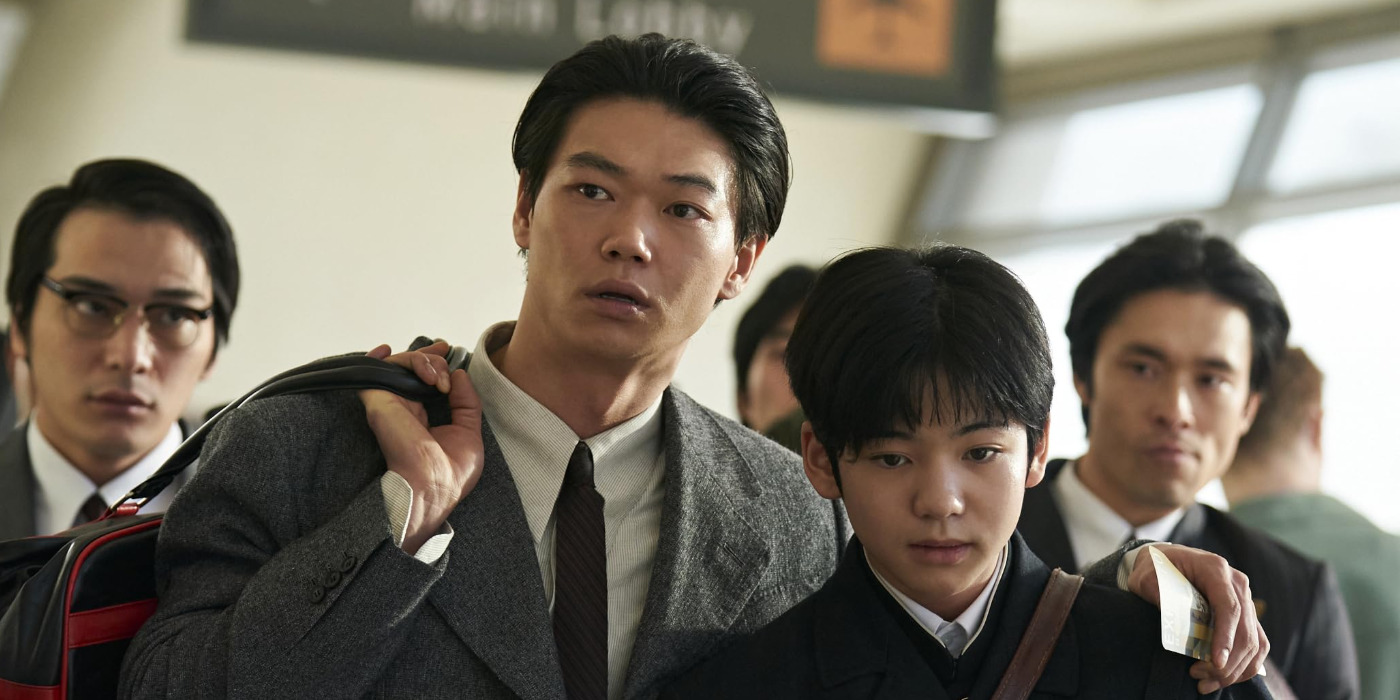Byun Sung-hyun’s Korean film ‘Good News’ presents a tale about socio-politics as explored through a distinctive dark comedy lens. The story revolves around a terrifying case of hijacking that overtakes the Japanese Ride 351 aircraft as it departs from the Haneda Airport. The Hijackers are a group of young members of the extremist communist group the Red Army Faction, who intend to land the vessel in North Korea. As a result, South Korean officials came up with the idea to swoop in and rescue the situation by putting the best man on the job. The latter happens to be a cunning, resourceful agent who operates in the shadows and is only known as a “Nobody.”
Thus, more than 100 people’s lives end up in the hands of a few bumbling, incompetent bureaucrats and the handful of concerned individuals under their command. Set in the 1970s, the film uses the realistic premise and an absurdist thematic narrative to highlight the follies of political agendas on an international scale. Interestingly enough, while much of the storytelling finds a largely fictitious footing, the Japanese Ride 351 and its pilots, Takahiro Kubo and Seigo Maeda, retain a deeper genesis in real life.
Japanese Ride 351 Reinterprets the Real-Life Hijacking of Japan Air Lines Flight 351
‘Good News’ is partially based on the real-life Yodogo Hijacking Incident, which took place on March 31, 1970. Even though the base premise of the film and various narrative beats throughout the on-screen story bear intentional resemblance to the actual hijacking incident, the former isn’t meant to be a historical retelling of the latter. Instead, director Byun Sung-hyun and his co-writer Lee Jin-seong only employ the historical event as a tool to explore the socio-political commentary evident throughout the project. As a result, the details of the events and the characterization of the characters involved in the film possess a dissonance with reality. Even so, many of these elements still end up sharing direct counterparts in real life. The same goes for the on-screen Japanese Ride 351, which is a fictionalization of the real Japan Air Lines Flight 351.

The Japan Air Lines Flight 351, also known as its Japanese nickname “Yodo,” faced a dangerous scenario in 1970. On March 31, during the vessel’s flight from Tokyo to Fukuoka, nine members of the Japanese communist group Red Army Faction hijacked the scheduled passenger flight, taking 129 people hostage. Initially, this hijacking group, populated with young hijackers armed with katana swords, a homemade bomb, and an ideology inspired by the ‘Ashita no Joe’ manga series, wanted to fly to Cuba. Nonetheless, logistical issues involving fuel led to a change of plans, turning North Korea into their desired destination. The film’s version of this vessel, Japanese Ride 351, mines significant inspiration from the source material, even staying true to much of its route through Japan, South Korea, and ultimately North Korea. All these similarities help ‘Good News’ hold onto a sense of historical familiarity, balancing out the fictionalized thematic nature of the story.
Takahiro Kubo and Seigo Maeda are Fictionalized Counterparts of Actual Pilots
Much like the central aircraft in the film, pilots Takahiro Kubo and Seigo Maeda are also fictionalized versions of real-life counterparts involved in the Yodogo Hijacking Incident of 1970. In real life, the pilots caught up in the tense encounter were Captain Shinji Ishida and his co-pilot, Teiichi Ezaki. The former, a then-47-year-old man, was in charge of the vessel throughout the high-pressure incident. After the Japan Air Lines Flight 351 was tricked into landing Seoul’s Gimpo Airport by South Korean officials, the hijackers struck up a deal which led to the release of the majority of the hostages. In the end, their lives were spared after Shinjirō Yamamura, Japan’s Vice Minister of Transport, offered himself as a hostage in their stead.

In the aftermath of this exchange, the flight took off for North Korea with the nine hijackers, Yamamura, Ishida, Ezaki, and flight engineer Toshio Aihara on board. Ultimately, these Japanese citizens, barring the hijackers, eventually returned to their homelands on April 5, 1970. At the time, Ishida was described by journalists as appearing to be in “unbelievably good health and spirits.” His demeanor was a testament to his brave and fierce spirit. Ultimately, Ishida and Ezaki served as a baseline inspiration for their on-screen counterparts, Takahiro Kubo and Seigo Maeda. The reality of their experiences evidently became a blueprint for the latter’s narratives in the film. Yet, it’s important to note that the characterizations and personalities of Kuno and Maeda remain largely fictionalized in service of the themes and narrative of ‘Good News.’
Read More: Is The Toledo Truth Teller a Real Newspaper? Is Enervate a Real Company?


